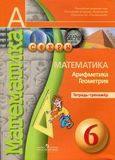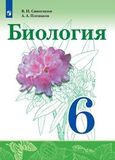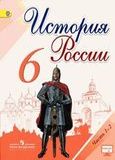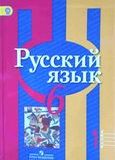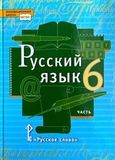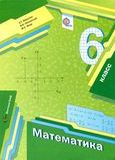Стр.50-51 Модуль 3 ГДЗ Starlight Баранова 6 класс
3e Мифы и легенды
Лексика Легендарные существа
1 Послушайте и скажите, затем сопоставьте каждое существо (A-F) с описанием (1-6). Объясните слова, выделенные жирным шрифтом.
1 Похоже на змею с длинной шеей.
2 Он маленький, с крыльями и магической силой.
3 Выглядит как человек, но огромен и пугает местных жителей.
4 Похож на лошадь с одним рогом.
5 Он может дышать огнем.
6 Это наполовину человек и наполовину рыба.
Решение #
1 D
2 E
3 А
4 C
5 В
6 F
2 Think! Вы знаете какие-нибудь истории о каких-нибудь существах A-F? Расскажите классу.
Решение #1
Sure, I know a story about a creature that looks like a horse with a single horn. It's called a unicorn. In many stories and myths, unicorns are portrayed as majestic and pure creatures with magical abilities. One famous story is about a young princess who goes on a quest to find a unicorn because its horn is said to have healing powers. Along the way, she faces challenges and learns important lessons about bravery and kindness. Eventually, she finds the unicorn and is able to use its horn to save her kingdom from a great evil.
Конечно, я знаю историю о существе, которое выглядит как лошадь с одним рогом. Это называется единорог. Во многих историях и мифах единороги изображаются как величественные и чистые существа с магическими способностями. Одна из известных историй рассказывает о молодой принцессе, которая отправляется в поисках единорога, потому что его рог, как говорят, обладает целительными свойствами. В ходе своего пути она сталкивается с испытаниями и учится важным урокам о смелости и доброте. В конце концов, она находит единорога и с помощью его рога спасает своё королевство от великого зла.
Решение #2
Yes, I know a story about a creature that looks like a snake with a long neck. It's called a dragon. In many ancient legends and fairy tales, dragons are depicted as powerful and fearsome creatures capable of breathing fire. One famous story is about a brave knight who must defeat a dragon to save a princess and her kingdom. The knight faces many challenges and dangers, but with courage and determination, he ultimately triumphs over the dragon and becomes a hero.
Да, я знаю историю о существе, которое выглядит как змея с длинной шеей. Это называется дракон. Во многих древних легендах и сказках драконы изображаются как могущественные и страшные существа, способные дышать огнем. Одна знаменитая история рассказывает о храбром рыцаре, который должен победить дракона, чтобы спасти принцессу и её королевство. Рыцарь сталкивается с многими испытаниями и опасностями, но смелостью и решимостью он в конечном итоге одерживает победу над драконом и становится героем.
Решение #3
Once there was a boy called Jack. Jack and his mother were very poor so Jack went to market to sell their last cow. He only got five beans for it and his mother was very angry. She threw the beans out of the window. The next morning, there was a huge beanstalk outside, reaching up into the clouds. Jack climbed to the top and found a giant's castle. The giant smelt the boy, but his wife hid the boy until he could escape. She also gave him some gold coins. The next time Jack went up the beanstalk, he stole a goose that laid golden eggs. On the last visit, Jack took a magic harp that could talk. It called out to the giant for help. The giant chased Jack down the beanstalk, but Jack cut down the beanstalk with an axe. The giant fell and died. After that, Jack was rich and he lived happily with his mother.
Жил-был мальчик по имени Джек. Джек и его мать были очень бедны, поэтому Джек пошел на рынок, чтобы продать последнюю корову. Он получил за нее всего пять бобов, и его мать была очень зла. Она выбросила бобы в окно. На следующее утро снаружи вырос огромный бобовый стебель, уходивший в облака. Джек забрался на вершину и нашел замок гиганта. Великан почувствовал запах мальчика, но его жена спрятала мальчика, пока он не смог сбежать. Еще она дала ему несколько золотых монет. В следующий раз, когда Джек поднялся на бобовый стебель, он украл гуся, несущего золотые яйца. В последний визит Джек взял волшебную арфу, которая могла говорить. Он позвал гиганта на помощь. Гигант преследовал Джека по бобовому стеблю, но Джек срубил бобовый стебель топором. Великан упал и умер. После этого Джек был богат и счастливо жил с матерью.
Аудирование и чтение
3 Посмотрите на заголовок текста, подзаголовки и изображения. О чем каждый миф? Слушайте, читайте и проверяйте.
Существа из легенд
Люди во всем мире любят рассказывать истории об ужасающих гигантах, волшебных единорогах и загадочных русалках. Вот две из этих волшебных сказок!
Гигант Болстер
Бостер был настолько велик, что одним шагом он мог преодолеть шесть миль с вершины холма на вершину холма! Он жил в Корнуолле на окраине Англии и наводил ужас на местных жителей, крал овец и даже ел людей. Однако однажды он влюбился в молодую девушку по имени Агнес и попросил ее выйти за него замуж. Агнес не хотела этого, поэтому попыталась придумать способ избавиться от него в качестве раздражителя. Она просила его делать опасные поступки, чтобы завоевать ее любовь, но ничего не выходило, так что у нее возникла последняя идея. Она попросила его залить кровью дыру в ближайшей скале. Болстер согласился. В конце концов, сколько крови гиганта нужно, чтобы наполнить маленькую дыру? Но дыра вела в море. Вся его кровь текла в море, и это был конец злого гиганта. Это очень популярная легенда в Корнуолле. Местные жители говорят, что на скалах Чапел-Порт все еще можно увидеть красное пятно!
Русалка Лара
В Бразилии местные жители рассказывают миф о русалке Ларе, обитающей в реке Амазонка. Однажды ночью молодому человеку приснилась красивая женщина, поющая грустную песню. На следующий день он пошел на рыбалку с отцом и увидел женщину из своего сна в хижине, плывущей по воде. Она пела ему, и он подошел к ней. Слишком поздно отец мужчины увидел, что у женщины длинный хвост розового дельфина. Она схватила молодого человека и нырнула вместе с ним в воду. Его отец больше никогда его не видел. По сей день местные жители говорят, что иногда видят русалку, плывущую глубоко в воде. И когда они слышат грустную песню русалки Лары, они запирают двери и держатся подальше от реки!
Решение #
The first myth is about a giant called Bolster who terrified people. He fell in love with a girl and ended up dying for her. The second myth is about a mermaid called lara. A man went fishing with his father. She sang to him and pulled him under the water to be with her.
(Первый миф о гиганте по имени Болстер, который наводил ужас на людей. Он влюбился в девушку и в конце концов умер за нее. Второй миф - о русалке по имени Лара. Мужчина ходил на рыбалку со своим отцом. Она пела ему и затащила под воду, чтобы он был с ней.)
4 а) Прочитайте текст еще раз и дополните предложения. Сравните свои ответы с ответами партнера.
1 Будучи таким большим, Болстер мог ходить от вершины холма на вершину холма / шесть миль за один шаг.
2 Он жил в Корнуолле, Англия.
3 Он любил Агнес, поэтому он попросил ее выйти за него замуж.
4 Он умер после того, как потерял всю свою кровь.
5 Русалка Лара явилась мужчине во сне.
6 Она затащила мужчину в воду.
7 Сегодня люди иногда слышат грустную песню Лары (русалки).
Решение #
1 travel from hilltop to hilltop/six miles in one step (ходить от вершины холма на вершину холма / шесть миль за один шаг.)
2 Cornwall, England (Корнуолл, Англия)
3 asked her to marry him (попросил ее выйти за него замуж)
4 all his blood (всю его кровь)
5 his dream (во сне)
6 into the water (в воду)
7 the sad song of lara (the mermaid) (печальную песню Лары (русалки)
b) Задавайте вопросы по тексту и отвечайте на них.
Решение #
A: Where did Bolster the giant live?
B: In Cornwall on the southwestern tip of England. What did he steal?
A: He stole sheep. Who did he fall in love with?
B: A girl called Agnes. What did he ask her?
A: He asked her to marry him. Did Agnes want to?
B: No, she didn't. What did she do?
A: She asked him to fill a small hole with his blood. Did he do it?
B: Yes, he did. Where did the hole lead?
A: It led to the sea. What happened next?
B: He lost all his blood and died. Is this a popular legend?
A: Yes, it is. People say you can still see a red stain on the cliffs.
(A: Где жил великан Болстер?
B: В Корнуолле на юго-западной окраине Англии. Что он крал?
A: Он крал овец. В кого он влюбился?
B: В девушку по имени Агнес. Что он ее спросил?
A: Он попросил ее выйти за него замуж. Хотела ли Агнес замуж за него?
B: Нет. Что она сделала?
A: Она попросила его заполнить своей кровью маленькую нору. Он это сделал?
B: Да. Куда вела нора?
A: Она вела к морю. Что произошло дальше?
B: Он потерял всю свою кровь и умер. Это популярная легенда?
A: Да, это так. Говорят, на скалах все еще можно увидеть красное пятно.)
A: Where did lara the mermaid come from?
B: Brazil. Where did she live?
A: In the Amazon River. What did the young man dream about?
B: A beautiful woman singing a sad song. Where did he go the next day?
A: He went fishing. What did he see?
B: He saw the woman from his dream. What did she do?
A: She sang to him. What did he do?
B: He went towards her. What happened?
A: She grabbed him and pulled him under the water. What happened after that?
B: His father never saw him again. What do people say today?
A: They say they can sometimes see a mermaid in the water. What do they do if they hear lara's sad song?
B: They lock their doors and stay away from the river.
(A: Откуда взялась русалка Лара?
B: Из Бразилия. Где она жила?
A: В реке Амазонка. Что приснилось молодому человеку?
B: Красивая женщина поющая грустную песню. Куда он пошел на следующий день?
A: Он пошел на рыбалку. Что он увидел?
B: Он видел женщину из своего сна. Что она делала?
A: Она пела ему. Что он сделал?
B: Он подошел к ней. Что произошло?
A: Она схватила его и потащила под воду. Что случилось потом?
B: Его отец никогда его больше не видел. Что говорят сегодня люди?
А: Говорят, иногда в воде можно увидеть русалку. Что они делают, если слышат грустную песню Лары?
B: Они запирают двери и держатся подальше от реки.)
Проверьте эти слова
legend (легенда), terrifying (ужасающий), mysterious (таинственный), tales (повести), step (шаг), hilltop (вершина холма), tip (верхушка, кончик), terrify (вселять ужас), steal (украсть), fall in love (влюбиться), get rid of (избавиться от), for good (навеки, надолго), win (выиграть), fill up (заполнить), hole (нора, отверстие), cliff (утес), blood (кровь), lead down (вести вниз), be the end of (быть концом), stain (пятно), hut (хижина), float (плять), grab (схватить), dive (нырять), to this day (и по сей день), deep (глубокий), lock (запирать (двери)), far away (держаться подальше)
Решение #
legend (n): a story from the past that is not proven to be true
(легенда (сущ.): история из прошлого, правдивость которой не доказана)
terrifying (adj): very scary
(ужасающий (прил.): очень страшный)
mysterious (adj): puzzling, strange
(таинственный (прил.): озадачивающий, странный)
tale (n): story
(повесть (сущ.): история)
step (n): a movement made by lifting up one foot and putting it down again or the distance covered by this movement
(шаг (сущ.): движение, совершаемое путем поднятия и повторного опускания одной ступни, или расстояние, преодолеваемое этим движением)
hilltop (n): the highest part of a small mountain
(вершина холма (сущ.): самая высокая часть небольшой горы)
tip (n): the pointed end
(кончик (сущ.): заостренный конец)
terrify (v): вызывать у других страх
(вселять ужас (глаг.):
steal (v): to take sth from sb without their permission
(красть (глаг.): брать что-то у кого-то без их разрешения
fall in love (phr): to start having feelings of love for sb
(влюбиться (глаг.): начать испытывать чувство любви к кому-то)
get rid of (phr): to do sth to make sb leave because they are annoying or unwanted
(избавиться от чего-то (фраза): сделать что-то, чтобы заставить кого-то уйти, потому что они раздражают или нежелательны)
for good (phr): finally and forever, permanently
(надолго, навеки (фраза): окончательно и навсегда, навсегда)
win (v): to gain
(выиграть (глаг.): приобрести)
fill up (phr v): to make sth become full
(заполнить (фраза): чтобы насытиться)
hole (n): an opening/cavity in sth solid
(дыра, нора (сущ.): отверстие / полость в чем-то твердом
cliff (n): a high and steep face of rock
(утес (сущ.: высокая и крутая скала)
blood (n): a red liquid that the heart pumps through the body
(кровь (сущ.): красная жидкость, которую сердце перекачивает через тело)
lead (down) (v): to go in a particular direction
(вести (вниз) (глаг.): идти в определенном направлении
be the end of (phr): to not exist anymore, to not be a problem anymore
(быть концом (фраза): больше не существовать, больше не быть проблемой)
stain (n): a dirty or discoloured spot
(пятно (сущ): грязное или обесцвеченное пятно)
hut (n): a small, simple shelter (usually with one or two rooms)
(хижина (сущ): небольшое простое убежище (обычно с одной или двумя комнатами))
float (v): to stay on top of liquid without sinking
(плыть (глаг.): оставаться на поверхности жидкости, не тонуть
grab (v): to take or grasp sth suddenly
(схватить (глаг.): взять или схватить что-либо внезапно)
dive (v): to jump headfirst into deep water
(нырять (глаг.): прыгнуть головой в глубокую воду)
to this day (phr): until now
(по сей день (фраза): до сих пор)
deep (adj): being far beneath the top
lock (v): to secure sth using a key
(запирать, закрывать (глаг.): обеспечить безопасность чего-то с помощью ключа)
far away (phr): at a great distance from
(далеко (фраза): на большом расстоянии от)
5 a) Используйте слова / фразы из поля “Проверьте эти слова” в правильной форме для завершения предложений.
1 Люди говорят, что единороги живут в лесах вдали от людей.
2 Морское чудовище схватило мальчика и унесло его на дно океана.
3 Дракон напугал жителей деревни, когда летел вниз с неба!
4 История великана Болстера - очень известная легенда.
5 Агнес придумала план, как навсегда избавиться от гиганта.
6 Люди запирают двери и остаются дома, когда поет русалка лара!
Решение #
1 far away (далеко)
2 grabbed (схватила)
3 terrified (напугал)
4 legend (легенда)
5 get rid of (избавиться)
6 lock (запирают)
b) Посмотрите на картинки и расскажите классу сказки.
Решение #
Bolster the giant lived in Cornwall, England. He was huge and he could walk from one hilltop to the other. He terrified the local people and stole sheep. One day, he met a girl called Agnes and fell in love with her. He asked her to marry him. Agnes didn't want to. She made a plan to get rid of him. She told him to go to a cliff and fill up a hole with his blood. The giant lost all his blood in the sea and died. Agnes was then free.
(Гигант Болстер жил в Корнуолле, Англия. Он был огромен и мог ходить с одного холма на другой. Он пугал местных жителей и крал овец. Однажды он встретил девушку по имени Агнес и влюбился в нее. Он попросил ее выйти за него замуж. Агнес не хотела. Она разработала план, как избавиться от него. Она сказала ему, чтобы он спустился к обрыву и залил нору своей кровью. Гигант потерял всю свою кровь в море и умер. Тогда Агнес была на свободе.)
A young man had a dream one night. He saw a beautiful young woman singing a sad song. The next day, he went out in a fishing boat with his father. He saw the woman from his dream singing to him. She was a mermaid and she grabbed him and pulled him into the water. His father never saw him again.
(Однажды ночью молодому человеку приснился сон. Он увидел красивую молодую женщину, поющую грустную песню. На следующий день он отправился в рыбацкой лодке со своим отцом. Он видел, как женщина из его сна поет ему. Она была русалкой, она схватила его и затащила в воду. Его отец больше никогда его не видел.)
Study skills
Расширение словарного запаса
Изучение прилагательных вместе с их синонимами поможет вам обогатить свой словарный запас.
6 Сопоставьте выделенные прилагательные в тексте с их синонимами ниже.
Решение #
unhappy - sad (несчастный - печальный)
strange – mysterious (странный - таинственный)
unsafe - dangerous (небезопасный - опасный)
tiny – small (крошечный - маленький)
gorgeous - beautiful (великолепный - красивый)
scary - terrifying (страшный - ужасающий)
wicked - evil (нехороший - злой)
well-known – popular (хорошо-известный - популярный)
Говорение и письмо
7 а) Как вы думаете, есть ли правда в легендах из текста? За три минуты напишите несколько предложений, затем зачитайте свои предложения классу.
Решение #1
I don't think there's any truth in the legends in the text. The story of Bolster the Giant seems too exaggerated to be real. Giants that big and evil eating people? It sounds more like something from a fairy tale than actual history. And as for Lara the mermaid, it's hard to believe in creatures like mermaids living in rivers. It's probably just a story made up to scare people or entertain them. So, I think these legends are just fun stories to tell around a campfire, but I wouldn't take them too seriously.
Я не думаю, что в легендах из текста есть хоть какая-то правда. История о Больстере-великане кажется слишком преувеличенной, чтобы быть настоящей. Ведь великаны такого размера и злые, которые поедают людей? Это больше похоже на что-то из сказки, чем на реальную историю. А что касается Лары русалки, трудно поверить в существование таких существ, как русалки, живущих в реках. Вероятно, это просто история, выдуманная, чтобы пугать людей или развлекать их. Так что, я думаю, эти легенды просто забавные истории, которые рассказывают вокруг костра, но я бы не воспринимал их слишком серьезно.
Решение #2
I think there might be some truth in the legends in the text, but it's hard to say for sure. The story of Bolster the Giant could be based on a real person who was exceptionally tall and strong, and maybe he did something bad that made him infamous in his local area. As for Lara the mermaid, it's possible that people mistook a rare species of river creature for a mermaid, especially if they weren't familiar with the wildlife of the Amazon. So, while the legends might be exaggerated, there could be some kernels of truth buried in them.
Я думаю, что в легендах из текста может быть какая-то правда, но сложно сказать наверняка. История о Больстере-великане могла бы быть основана на реальном человеке, который был исключительно высоким и сильным, и, возможно, он сделал что-то плохое, что сделало его известным в своем регионе. Что касается Лары русалки, возможно, люди приняли редкий вид речного существа за русалку, особенно если они не были знакомы с животным миром Амазонки. Так что, хотя легенды могут быть преувеличены, в них может быть немного правды.
Решение #3
I don't think that the stories are true. I think people made these stories up for fun. People in the past didn't have television or cinema, so they made up stories instead.
(Я не думаю, что эти истории правдивы. Думаю, люди придумывали эти истории для развлечения. В прошлом у людей не было телевидения и кино, поэтому они придумывали истории.)
b) Есть ли в вашей стране история о легендарном существе? Напишите о нем короткий текст. Напишите его название, место, где он живет, как он выглядит, рассказ о нем. Прочитайте классу.
Решение #1
Yes, there's a famous creature in Russian folklore called the "Baba Yaga." Baba Yaga is said to live deep in the forests of Russia, usually in a hut that stands on chicken legs. She's described as an old, haggard woman with a long, hooked nose and iron teeth. Legend has it that Baba Yaga flies around in a mortar, using a pestle to steer, and she's often portrayed as a witch with magical powers. There are many stories about Baba Yaga, but one of the most famous is about a young girl named Vasilisa who is sent to Baba Yaga's hut by her wicked stepmother. Vasilisa must complete difficult tasks for Baba Yaga, but with the help of a magical doll given to her by her dying mother, she manages to outsmart Baba Yaga and escape.
Да, в русском фольклоре есть известное существо по имени "Баба-Яга". Говорят, что Баба-Яга живет глубоко в лесах России, обычно в избушке, стоящей на курьих ножках. Её описывают как старую, ветхую женщину с длинным крючковатым носом и железными зубами. Легенда гласит, что Баба-Яга летает на ступе, используя пестик в качестве руля, и часто изображается как ведьма с магическими способностями. Существует много историй о Бабе-Яге, но одна из самых известных - о молодой девушке по имени Василиса, которую злая мачеха отправляет в избу Бабы-Яги. Василисе приходится выполнять трудные задания для Бабы-Яги, но с помощью волшебной куклы, подаренной ей умирающей матерью, она умудряется перехитрить Бабу-Ягу и сбежать.
Решение #2
Yes, in Russian folklore, there's a creature known as the "Firebird." The Firebird is said to live in distant lands, often in the heart of a magical forest. It's described as a magnificent bird with feathers that shine like flames, illuminating the sky wherever it flies. Legends say that capturing the Firebird is nearly impossible due to its elusive nature and magical abilities. One famous story about the Firebird is about a brave young prince who embarks on a quest to catch it. Along the way, he encounters various challenges and meets magical beings who help him on his journey. Eventually, the prince succeeds in capturing the Firebird, but he learns valuable lessons about the consequences of greed and the importance of respecting nature.
Да, в русском фольклоре есть существо, известное как "Жар-птица". Говорят, что Жар-птица живет в далеких землях, часто в самом сердце волшебного леса. Её описывают как великолепную птицу с перьями, сверкающими, как пламя, освещающие небо там, где она летит. Легенды гласят, что поймать Жар-птицу практически невозможно из-за её уклончивого характера и магических способностей. Одна известная история о Жар-птице рассказывает о храбром молодом принце, который отправляется в поисках её. По пути он сталкивается с различными препятствиями и встречает волшебных существ, которые помогают ему в его путешествии. В конце концов, принцу удается поймать Жар-птицу, но он извлекает ценные уроки о последствиях жадности и важности уважения к природе.
Решение #3
There is an old woman with a "bone leg" living in a forest in Slavic mythology and folklore. Her name’s Baba Yaga. She lives in a hut on chicken legs. There is a fence of human bones around her hut.. Baba yaga flies on a broom. She loves to lure small children to her, and then fried them in the oven. ?? ? ??? ?
Russian writers and poets A.S. Pushkin, V.A. Zhukovsky, Alexey Tolstoy? ? often used ?this character in their fairy tales and stories.
В славянской мифологии и фольклоре есть старуха с “костяной ногой”, живущая в лесу. Ее зовут Баба Яга. Она живет в избе на куриных ножках. Вокруг ее хижины забор из человеческих костей. Баба-яга летает на метле. Она любит заманивать к себе маленьких детей, а потом жарить их в печи. ?? ? ??? ?
Русские писатели и поэты А.С. Пушкин, В. Жуковский, Алексей Толстой часто использовал этого персонажа в своих сказках и рассказах.
Приведем выдержку из задания из учебника Баранова, Дули, Копылова 6 класс, Просвещение:
3e Myths and legends
Vocabulary Legendary creatures
1 Listen and say, then match each creature (A-F) with a description (1-6). Explain the words in bold.
1 It looks like a snake with a long neck.
2 It's small, with wings and magical powers.
3 It looks like a human but it's huge and terrifies local people.
4 It looks like a horse with a single horn.
5 It can breathe fire.
6 It's half human and half fish.
2 Think! Do you know any stories about any of the creatures A-F? Tell the class.
Listening & Reading
3 Look at the title of the text, the subheadings and the pictures. What is each myth about? Listen, read and check.
Текст аудирования:
Interviewer: Anna Richards is a fourteen-year-old student who recently visited the Florence Nightingale Museum. Anna, tell us why you went there.
Anna: Well, I was doing a project about Florence Nightingale at school. I found information on the Internet about her life. But then, a friend told me there was a museum dedicated to her life and work. That's not all! The museum is really close to my house, so I knew I had to go. Interviewer: Did anyone go with you?
Anna: Yes. When I told my dad that I wanted to go, he decided to take me there. He was really happy that I wanted to learn more about such an important hero. He also thought it would help me with my school project.
Interviewer: What kind of things did you see at the museum?
Anna: Well, Florence Nightingale was known as the "Lady with the Lamp". That's because she was famous for carrying a lamp as she helped soldiers in the Crimean War. The museum has the lantern she used in the war in its collection. That was amazing to see. There are over two thousand items in the collection. It even has her pet owl, Athena, on display.
Interviewer: That sounds really interesting! Did you learn anything interesting about her life?
Anna: Yes. There was a lot of information about her work. She dedicated her life to helping people in need. But she was also responsible for improving standards of nursing and making hospitals better places. She was a remarkable lady. She was responsible for improvements in the training of nurses. She campaigned all her life for a better health system.
Interviewer: So Florence Nightingale's life was completely dedicated to nursing, wasn't it?
Anna: It really was. I bought some things from the museum shop at the end of the day. One of the items I bought was a mug with a famous quotation from Florence Nightingale. It reads, "The first thought I can remember, and the last, was nursing work." I think that shows just how important nursing was to her. Interviewer: Did the museum visit help you with your school project?
Anna: Oh yes. It really helped. I already had lots to write about but the museum gave me even more information. I bought some postcards from the museum shop and I used them to make the project more colourful. My teacher was delighted with the work I put into the project. She gave me an 'A'.
4 a) Read the text again and complete the sentences. Compare your answers with your partner.
1 Because he was so big, Bolster could travel from hilltop to hilltop/six miles in one step.
2 He lived in Cornwall, England.
3 He loved Agnes so he asked her to marry him.
4 He died after he lost all his blood.
5 The mermaid lara appeared to a man in his dream.
6 She pulled the man into the water.
7 Today, people sometimes hear the sad song of lara (the mermaid).
b) Ask and answer questions based on the text.
Creatures of legend
People all over the world love to tell stories of terrifying giants, magical unicorns and mysterious mermaids. Here are two of these magical tales!
Bolster the Giant
Boster was so big that with one step he could travel six miles from hilltop to hilltop! He lived in Cornwall on the tip of England and terrified the locals, stealing sheep aid even eating people. One day, though, he fell in love with a young girl called Agnes and asked her to marry him. Agnes didn’t want to, so she tried to think of a way to get rid ol him for goad. She asked him to do dangerous things to win her love but nothing worked, so she had one last idea. She asked him to fill up a hole in a nearby cliff with his blood. Bolster agreed. After all, how much giant’s blood does it take to fill a small hoe? The hole, though, led down into the sea. All his blood ran into the sea and that was the end of the evil giant. This is a very popular legend in Cornwall. Locals say you can still see a red stain on the cliffs at Chapel Porth!
Lara the mermaid
In Brazil, the locals tell the myth of the mermaid lara who lives in the Amazon River. One night, a young man dreamed of a beautiful woman singing a sad song. The next day, he went fishing with his father and saw the woman from his dream in a hut floating on the water. She sang to him and he went to her. Too late, the man’s father saw that the woman had the long tail of a pink dolphin. She grabbed the young man and dived into the water with him. His father never saw him again. To this day, the locals still say that they sometimes see the mermaid swimming deep in the water. And when they hear the sad song of the mermaid lara, they lock their doors and stay far away from the river!
Check these words
legend, terrifying, mysterious, tales, step, hilltop, tip, terrify, steal, fall in love, get rid of, for good, win, fill up, hole, diff, blood, lead down, be the end of, stain, hut, float, grab, dive, to this day, deep, lock, far away
5 a) Use words/phrases from the Check these words box in the correct form to complete the sentences.
1 People say unicorns live in forests far away from humans.
2 The sea monster grabbed the boy and took him to the bottom of the ocean.
3 The dragon terrified the people of the village when it flew down from the sky!
4 The story of Bolster the giant is a very well- known legend.
5 Agnes thought of a plan to get rid of the giant forever.
6 People lock their doors and stay inside when the mermaid lara sings!
b) Look at the pictures and narrate the tales to the class.
Study skills
Expanding vocabulary
Learning adjectives together with their synonyms helps you enrich your vocabulary.
6 Match the highlighted adjectives in the text with their synonyms below.
Speaking & Writing
7 a) Do you think there is any truth in the legends in the text? In three minutes write a few sentences, then read your sentences to the class.
b) Is there a story about a legendary creature in your country? Write a short text about It. Write Its name, place It lives, what it looks like, the story about it. Read it to the class.
*размещая тексты в комментариях ниже, вы автоматически соглашаетесь с пользовательским соглашением
